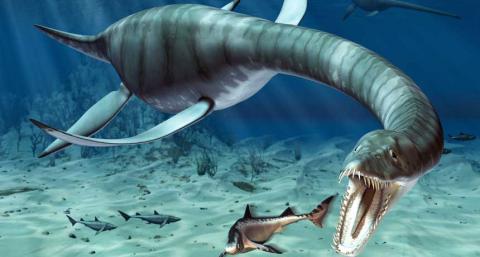
The Real Sea Monsters
For millions of years, reptiles dominated the Earth. Many that dwelled on land were dinosaurs. But no dinos swam in the seas. The oceans had their own cadre of reptiles. Many were top predators, the sharks and killer whales of their time. And they would have made the oceans very dangerous.
Some of these marine reptiles were shaped like dolphins and probably could swim fast. Some were as large and as long as a school bus. But they lacked the distinctive hip structure that only dinos had.
A dinosaur had distinctive holes in its pelvis where its thighbones were attached, notes Sterling Nesbitt. He’s a vertebrate paleontologist at Virginia Tech in Blacksburg. Marine reptiles of the same time period lacked such holes.
About 252 million years ago, there was a mass extinction. At that time, huge volcanoes erupted in what is now Siberia. The ocean's chemistry changed as well. As a result, large numbers of animals, plants and other species died out. Overall, about 90 percent of ocean species and 70 percent species on land disappeared. After the devastated ecosystems recovered, the few species that survived evolved to better fit in with the new environmental conditions.
With so many ocean species gone, some land creatures tried an aquatic lifestyle — and succeeded. These animals evolved to become ichthyosaurs (IK-thee-oh-saurs). Much later, after additional mass extinctions, other land-dwelling reptiles took to the seas. Their descendants evolved to become plesiosaurs, pliosaurs and mosasaurs.
People have been unearthing fossils of such sea creatures for hundreds of years. But scientists are still finding new species and discovering new information on what these animals looked like and how they lived.
